What a wonderful thing the internet is. Sorry but it took years to get from the stately Morrell's to the more eclectic Astor Wines in Manhattan and whereas these are still estimable establishments with a bit of www research we discovered a wealth of quite small to medium-sized wine merchants which put New York in the forefront of any city we have ever visited as far as diversity, originality, idiosyncrasy and any other criterion you may imagine for the making of an interesting wine merchant. Here is the list, no role of honour of those we visited, striking gold in each one:
California Wine Merchants, 15 Bridge Street, Financial district. Californian wines.
Chambers Street Wines, 148 Chambers St. 10007. Vin Naturel and much more
Crush, 153 E 57th Street. Broad but mainly French.
De Vino Boutique, 30 Clinton Street, Soho, Italian wines
Enoteca di Palo, 200 Grand, Soho. Italian wines
Puro, 161 Grand, Soho. Chilean wines
Uva, 199 Bedford Avenue, 11211 (Brooklyn). Broad but intelligent.
Also highly recommended (although we didn't find anything for our particular purposes) were;
DOC, 147 Broadway, Brooklyn
Tinto Fino, 85, 1st Avenue. (Spanish wine specialist)
Tribeca Wine, 40 Hudson Street, Tribeca.
The one disappointment universally shared between all these otherwise admirable places was an almost total lack of wines from New York State. Obviously the Californian, Chilean and Spanish specialist shops do not come into question but typically the others stocked perhaps one or two New York wines if any. Only our old favourite Astor Wines had anything approaching a selection. Reasons given for this varied from there being 'no call for them' to the fact that the wineries didn't have the budget to send agents to the shops and the merchants didn't have the budget to tour the wineries. Others said that despite standards having risen very nicely the quality was still not such as to warrant stocking any of these wines.
We disagree with this last view: we consumed an old favourite, Lieb's Pinot Blanc in a Montauk restaurant which went down and refreshed as well as practically any white wine we know and at Channing Daughters we made a significant discovery (see our blog; 'A short visit to Long Island') which puts that particular winery in an especially interesting category. Do the Valpollicellas (Ripasso or not) really deserve their place on the shelves when these and award winning Rieslings from the Finger Lakes are nowhere to be seen? Just a rhetorical question.
To return to the positive, the above merchants were not only eclectic and imaginative, their shops nicely fitted, their air-conditioning units deliciously cool etc. but they were in the main also fantastically well informed and helpful. One or two really stood out in this respect and we received many valuable tutorials.
In the Enoteca di Palo, we entered while the owner was being interviewed by Public TV and was in the process of describing the merits of the Monte di Grazia Tintore no less! We were amazed. The interview over, Lou DiPalo (we think it was he) took us through his range and we immediately found a white we had never heard of: Mantonico. A not so quick Google throws up the slightly worrying information that Mantonico (or Montonico) Nero is nothing else by a synonym for Gaglioppo but fortunately the white Mantonico is something completely independent - Un vitigno misterioso, sicuramente proveniente dalla Grecia, deriverebbe, infatti, dalla voce “mantonikos”, che significa indovino, profeta. Se ne trovano traccia nelle cronache cinquecentesche di G. Marafioti, come uva tipica calabrese. È un vino bianco di carattere, che si esprime nel tempo e che accompagna splendidamente la cucina mediterranea, ma si abbina bene anche a quella orientale.
Zona di produzione: Lamezia Terme.
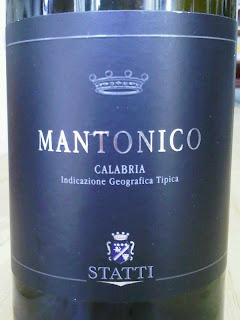
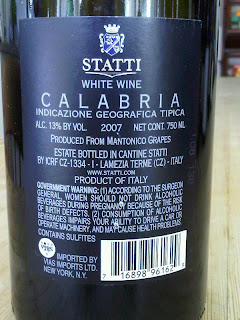
Not only this treasure but also Pallegrellos white and red and the fabled Casavecchia, a grape said to have been reduced to one single vine which grew up an old house (casa vecchia)and was propagated from this one source and finally planted in enough quantity to make wine. This story is right up Slotovino's street.
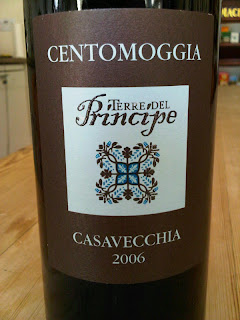
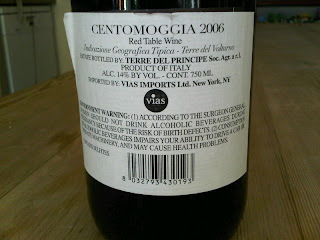
We also bought the Pallagrello Nero of the same producer, Terre del Principe from the Terre del Volturno, Campania (both 14%).

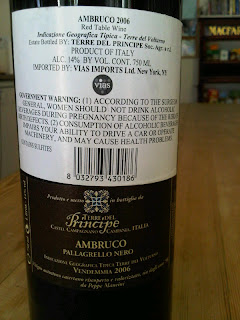
We have to thank the excellent baritone and wine expert Ben Bevan for the first mention of Pallegrello Nero. Other treasures from Di Palo included a Chambave Rouge by Podere Castorani from the Vallee d'Aoste (12%),

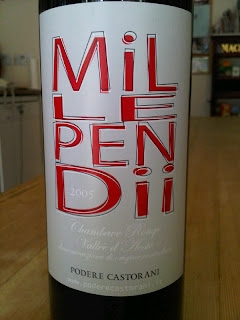
a great rarity since most of this wine (highly regarded by Maurice Hazan) is snapped up on release and drunk locally.
But even more impressive, if that is possible was Chambers Street Wines where we had the good fortune to meet David Lillie who not only knew every wine in his large inventory but was able to tell us the name of the pianist playing Mozart's Sonata No. 11 ("alla turca") - (Maria Joao Pires - a very interesting interpretation) and discuss the merits of Jordi Savall and various other original instrument bands as well, thus breaking what had seemed an almost iron rule that appreciation of wine doesn't extend to an appreciation of good music.
We have been receiving the Chambers Street Wines newsletter since our visit and this too is outstanding. David Lillie and his business partner Jamie Wolff opened the shop in the June before 9/11. Chambers Street is very close indeed to Ground Zero and on their website they mention the hard work having to recover from that cataclysm.
Their aims as expressed in their website are worth mentioning;
Chambers Street Wines opened in June 2001, the product of David Lillie's and Jamie Wolff's idea that New York might support a shop that indulged their love for naturally made wines from artisanal small producers. There are very, very few brand names here. We choose wines that express their origins, the talent and commitment of the growers and winemakers, and the inherent quality of the vintage. Every wine we stock is tasted, retasted, debated.... this is a shop where everyone who works here actually loves wine, drinks wine with food, and knows at least a little bit about what we're selling. Particular strengths here are the Loire Valley, Burgundy and the Rhone, Piedmont, Austria and Germany...David Lillie also recommended a Beaujolais 'non greffee' by a relatively new producer, Ducrous in Regnie whose operation is so minuscule as to make for example Marionnet in the Loire (who also produces wine from ungrafted vines, i.e. not using American rootstocks) look 'positively industrial'. This suggestion came as a 'doorknob recommendation. It is a given that Mr. Lillie's enthusiasm is for you to share his discoveries rather than to make another sale. Had we come across this shop first instead of last we would no doubt have bought a great many bottles more than the Diego Seco (a white grape from Lanzarote) by Bermejo (2008 - 13%) - an interesting enough rarity in itself.
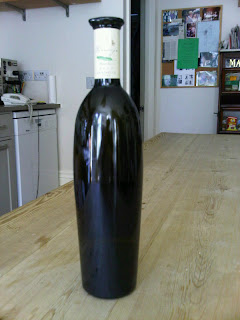
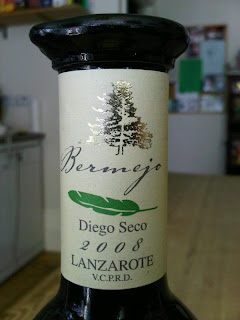
As far as we are concerned the icing on the cake so to say was the fact Chambers Street has brought in a Colares - Colares Chitas no less, becoming the sole importer of this significant wine in the whole of America. It will be very difficult to find anyone better when it comes to the Slotovino awards 2010/11 but you never know.
It was also at Chambers Street Wines that we obtained the wonderfully strong but light box
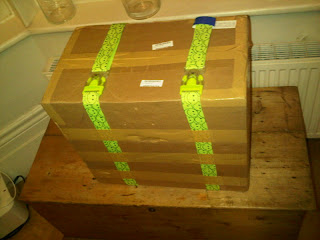
in which to transport our haul of wines from the Merchants of New York back to London. As a PS, we were extremely happy to be told by customs that 8 litres of wine per person may be imported from the USA without duty.
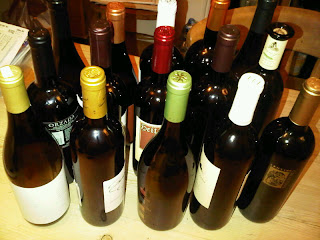
At Puro, we found Odfjell's Carignan (Orzada, Maule 14%) we had read about and wanted to try only because even a Carignan increases Chile's varieties by a significant percentage
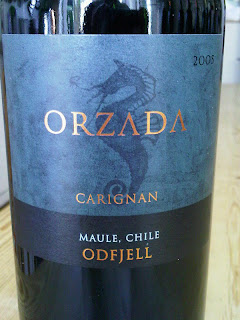

and at De Vino, that most rare phenomenon, a Colorino 'in purezza'.
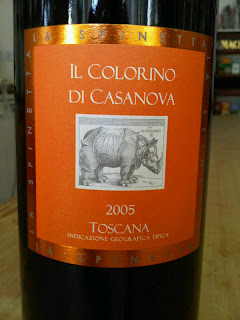
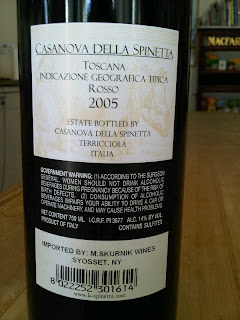
This was delicious and joins our list (OK, Slotovino Hall of Fame) 'nem con'. The example, as we say possibly unique, was by Casanova della Spinetta, Terricciola, Tuscany (14%). No doubt there was much more of interest here but we had limited time in Clinton St. as in many of the shops we visited.
Next came a wine called 'Rio Tinto' from California Wine Merchants - a blend of Touriga Francesa (56%), Alverelhao (24%), Touriga Nacional (13%) and Touriga Roriz (7%) by Lee Family Farms of Alta Mesa, Lodi), 13.5% Abv; our first sighting of these grapes in California, at least in a table wine.

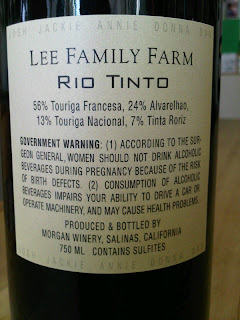
At Crush, we were greatly impressed by the knowledgeable staff who in seconds of our usual request for unknown grape varieties came up with a Prunelart by Robert and Bernard Plageoles, Gaillac 14% 'Domaine des trois Cantous'. Prunelart?


We had never heard of it! This is another place which will doubtless repay closer study on a future occasion.
Practically top of our research list was Uva in Williamsburg, the trendy part of Brooklyn since they stocked, according to Winesearcher, both a Bianco Gentile from Corsica and a Rossese which we had wanted to try. Sadly they were out of the latter but we secured the Bianco Gentile

and were impressed by the rest of their selection.
We couldn't leave Manhattan without returning to our old favourite Astor Wines. There we picked up a bottle of the Lieb Pinot Blanc from North Fork, Long Island (our motto is "never leave NY without one") and something which turned out to be absolutely amazing, a Heitz Cellars Napa Valley Grignolino (12.5%).

This was positvely the most European American wine we have ever tasted and frankly at the same time an improvement on any Italian Grignolino we had ever tasted. We also found at Astor a Tintilia de Molise
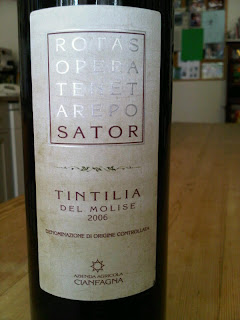

at 14% as so many of these examples of rare grape varieties
in purezza seem now to be.
